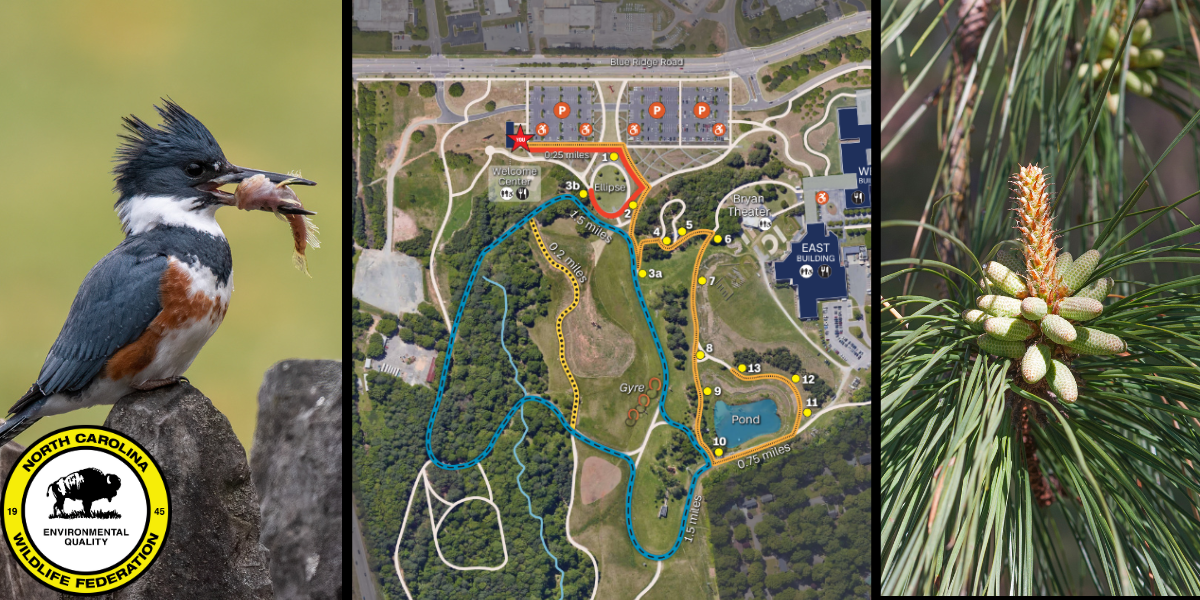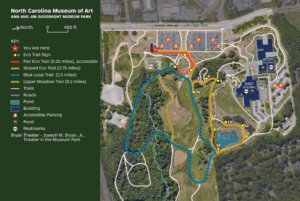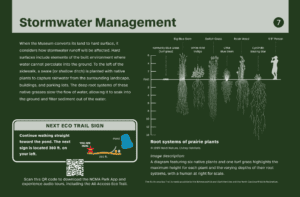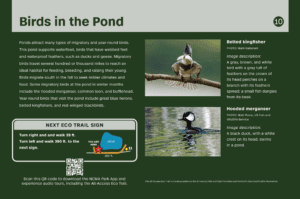Inspiring Curiosity and Increasing Access: NCWF Partners with North Carolina Museum of Art to Establish All-Access Eco Trail

Communities form around shared interests and values. But something special is formed when different communities come together around a common interest – in this case, wildlife and habitat for all.
 In partnership with North Carolina Wildlife Federation (NCWF), the North Carolina Museum of Art (NCMA) is set to open an All-Access Eco Trail, in NCMA’s Ann and Jim Goodnight Museum Park, just outside the doors of the museum’s main building.
In partnership with North Carolina Wildlife Federation (NCWF), the North Carolina Museum of Art (NCMA) is set to open an All-Access Eco Trail, in NCMA’s Ann and Jim Goodnight Museum Park, just outside the doors of the museum’s main building.
The All-Access Eco Trail is a series of braille and tactile signs, as well as full audio descriptions, designed to educate both visually impaired and sighted audiences. The signage and audio lead participants along a pathway through different habitats with diverse wildlife. Depending on the route taken, the trail ranges between 0.25 and 0.75 miles.
The goal is for the trail to provide free and easy access both to educate about North Carolina wildlife and habitat, and provide an opportunity for peaceful outdoor recreation – opportunities that will be available for all, across the spectrum of physical ability.
“This trail creates an opportunity for nature to inspire curiosity. An opportunity for all people to enjoy a beautifu

l natural space filled with rich habitat and wildlife wonders,” says NCWF Conservation Coordinator Luke Bennett, “Increasing accessibility to nature is an essential part of NCWF’s work. We are striving to build a strong and inclusive community. One that is built on a shared love of North Carolina and the wild places we call home.”
The All-Access Eco Trail provides tactile displays and descriptions of wildlife and native plant species present throughout the park. The first sign along the trail displays images of native plants – the native eastern bluestar (Amsonia tabernaemontana) and Rattlesnake master (Eryngium yuccifolium) – explaining their purpose through descriptive

text and a GPS-linked immersive audio recording.
Near a small pond towards the end of the trail, another sign displays images of a common snapping turtle (Chelydra serpentina) and a northern water snake (Nerodia sipedon). As species that are prevalent in the area, participants may even be able to spot the highlighted species, just on the other side of the sign display!
But these are not the only species represented along the trail. Other signs provide insight into plant species like bald cypress (Taxodium distichum), dwarf fothergilla flower (Fothergilla gardenii), and a variety of North Carolina pine trees; and wildlife species like the snowberry clearwing (Hemaris diffinis), spring peeper (Pseudacris crucifer) and Belted kingfisher (Megaceryle alcyon). And that’s just scratching the surface of what the All-Access Eco Trail has to offer.
The All-Access Eco Trail is set to open to the public in mid-October on NCMA’s campus (2110 Blue Ridge Road, Raleigh, NC, 27607). Stay tuned for more updates!
Written by:

– Written by Bates Whitaker, NCWF Communications & Marketing Manager

– Luke Bennett, NCWF Conservation Coordinator

